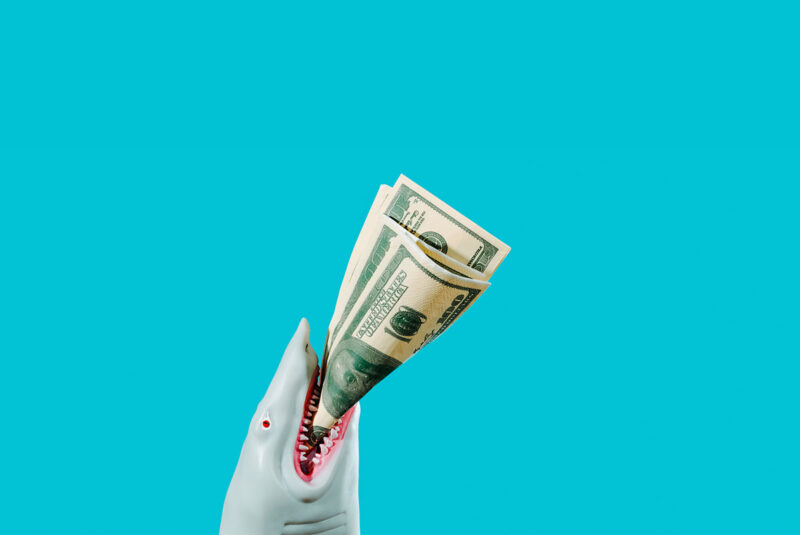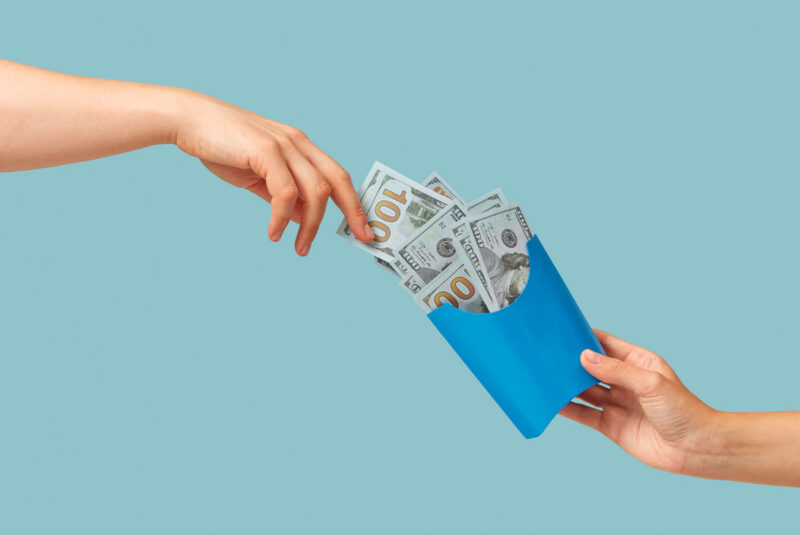Explore your mortgage options
Life comes with unexpected ups and downs. Unfortunately, we’re not always financially prepared when the tough times hit.
Emergency loans can be a viable tool to help you through these situations. In this article, we’ll explain what an emergency loan is, how to get an emergency loan, what the most common types are and how they work. We’ll also give you tips for choosing the right emergency loan for your circumstances.
Get Cash Fast
Rocket LoansSM offers same-day funding for personal loans. Get prequalified and get the cash you need, fast.
What Is an Emergency Loan?
An emergency loan can actually be any loan that you use in an emergency situation. The term “emergency loan” just describes what the loan is used for, rather than a specific loan type.
With emergency loans, there’s also an expectation that you’ll get quicker access to the cash you need than you would with other loan types (like a cash-out refinance).
How To Get an Emergency Loan
Regardless of the type of emergency loan you opt for, the steps for getting one are largely the same. We’ll walk you through a general process that should be applicable to obtaining any emergency loan.
1. Assess your financial situation
Start by assessing your financial situation and your immediate needs. Here are some questions to ask yourself:
- How soon do I need the money?
- How much do I need?
- What is my credit score?
- What is my debt-to-income (DTI) ratio?
Knowing your credit score and DTI ratio will give you a basic understanding of the types of loans you qualify for. Factoring in how much you need and when you need it should put you in a good position to begin speaking with lenders about your different options.
Don’t worry. We’ll cover the different types of loans, like emergency personal loans, in the next section.
2. Choose your lender
Once you have a good grasp of your financial situation and what your needs are, we recommend starting your search for a lender.
Everyone’s search will look different depending on their needs, where they live and their financial circumstances. If you can qualify for a personal loan, your search might involve some banks and online lenders. If you can’t qualify for a personal loan, you may consider joining a credit union to get access to a payday alternative loan (PAL).
Regardless of the type of emergency loan you’re pursuing, we recommend talking to multiple lenders that offer that product. Let them explain what they’re offering and take the time to ask as many questions as you need to fully understand the terms being offered.
We also recommend looking specifically at annual percentage rates (APRs), as opposed to just interest rates, so that you can accurately compare how much it will cost you to borrow the money from different lenders.
3. Apply for the loan
Once you’ve decided on the lender you want to use and the type of loan you’re going for, it’s time to apply for the loan. Your lender should be able to walk you through the specifics necessary for this step.
You’ll need to provide supporting documentation as part of a loan application. This can be simple, like proof of identity and address, but depending on how much you’re borrowing and the loan type they may also request tax returns, W-2s and bank statements.
4. Get the funds
Your lender will ultimately decide whether or not to issue the loan based on your application. The timeline for this decision varies depending on the lender you use and the type of loan you apply for. Generally, for emergency loans, the process moves quite quickly. Personal loans can be approved as quickly as one business day.
Once the loan has been approved, the funds will be transferred to you. The timeline here will once again vary by lender and loan type, as well as potentially the mechanics of the transfer, like if you opted for a check or direct deposit.
Once you’ve received the funds, you can immediately use them for whatever hardship caused you to take out an emergency loan in the first place.
5. Pay back the loan
Regardless of the type of loan you choose, you’ll eventually need to start paying it back. How soon those payments start and how long you have to pay it all back will depend on the type of loan that you took out.
Before taking out any type of emergency loan, make sure you completely understand what the repayment terms are. Failure to repay a loan can result in serious consequences, including:
- Severe damage to your credit score
- Litigation against you
- Loss of personal property
- Garnished wages
Types of Emergency Loans
Here are the most commonly used types of emergency loans.
Personal loans
If you need money quickly, your best option may be an unsecured personal loan. This is the same thing as an emergency personal loan. The word “emergency” just describes what the loan gets used for. Here, “unsecured” means you don’t need to provide the lender with collateral in order to get funding.
You can take out a personal loan through a bank, credit union or online lender. Depending on your credit score and debt-to-income (DTI) ratio, you may be able to borrow between $2,000 – $45,000 in as little as 1 business day.
Personal loans tend to be fixed-rate loans. You get a lump sum of money upfront and agree to pay back the loan in equal monthly installments for a period ranging from 12 – 60 months (1 – 5 years).
Personal loan interest rates usually start around 11%,[1] but can vary depending on your lender, credit score and income.
See What You Prequalify For
Get prequalified offers for personal loans from Rocket LoansSM within seconds. Like what you see? Same-day funding is available.
Checking your options won’t affect your credit score.
Payday loans
As the name suggests, payday loans offer short-term loans you can use to cover expenses until you get your next paycheck. In most circumstances, payday loans allow you to borrow a certain amount of money (less than the value of your next paycheck) with repayment due after 2 – 4 weeks.
The appeal of payday loans is that they can give you quick access to the cash you need, and the borrowing requirements are much lower than other types of loans because they don’t check your credit.
The downside is that you’ll pay much more to borrow the money. Payday loans charge a percentage fee for every $100 dollars borrowed. The exact number will depend on where you live, but this fee can be as high as 30%.[2]
APR is a metric used to calculate the total cost of borrowing money, including interest and lender fees. Using APR, payday loans are generally one of the most expensive loan options available.
Payday alternative loans
Because payday loans tend to target lower-income borrowers, America’s credit unions have stepped up to provide payday alternative loans (PAL). Credit union PALs generally come with significantly lower APRs than traditional payday loans.
With a PAL, you can borrow any amount up to $2,000. For a PAL, the loan term can range from 1 – 12 months. Members can only take out one PAL at a time, but these loans are available immediately upon becoming a member. (There used to be a waiting period before you could take out a PAL.)[3]
While these loans won’t work in every situation, they can help with funding in a pinch and at a more affordable rate than other types of loans.
Title loans
Title loans, or auto title loans, are another option but not an ideal one. First, to take advantage of an auto title loan, you need to own a car outright. If you’re still making payments, you won’t qualify.
An auto title loan allows you to use your car as collateral and then borrow up to 50% of the car’s appraised value. However, auto title loans usually require you to pay back the loan, plus interest in full after 30 days. The interest rate on these loans can easily be 25% of the loan amount. That’s a hefty interest payment you’ll need to cover, in addition to the balance of the loan.
If you don’t make your payment on time and in full, your lender can repossess your car. So before resorting to this type of loan, make absolutely certain you’ll be able to pay it back – or else you could find yourself without a method of transportation.
Cash advances
A cash advance is like a loan from your credit card company. It can be incredibly convenient. Just stick your credit card in an ATM, request a cash advance and you’re off and running. However, it doesn’t come cheap.
Many credit card companies charge a higher interest rate for a cash advance than they would for normal purchases. Also, while you get a 30-day grace period on interest when you use your credit card to make purchases, with a cash advance the interest starts accumulating as soon as the money leaves the ATM.
In addition, your credit card company may charge an upfront cash advance fee of up to 5% of your advance.
While a cash advance can be convenient, you’re better off asking your vendor to swipe your card directly, rather than going to the ATM. Ideally, you should only use a cash advance if cash is the only payment option available to you.
Emergency loan programs
Some cities and states offer emergency loan programs. These are designed to help you if you need to make repairs to your home’s water or sewer lines, or if you’re having trouble covering your rent payments. Loans and programs will vary depending on where you live, but contacting your local government is a good place to start.
Should You Get an Emergency Loan?
To help you decide if choosing one of these emergency loan types makes sense for you, we’ve put together a general list of pros and cons to consider.
PROS of getting an emergency loan👍
Almost all of the loans described are set up in a way to give you fast access to funds. If you’re in a tight spot, they can help you meet an unexpected financial burden quickly.
Once the funds are released to you, there’s a lot of flexibility in how you can spend the money. Medical expenses, emergency home repairs, grocery bills – the possibilities are almost endless. That rapid flexibility can ease a lot of pressure in difficult times.
Generally, these loans are easier to get approved for than other types of loans. For example, a personal loan is much more accessible than a mortgage or home equity loan, and payday loans don’t even include credit checks.
CONS of getting emergency loans👎
Compared to more traditional types of loans (like auto loans, mortgages and student loans), emergency loans usually have higher interest rates.
Payday alternative loans are capped at $2,000 and personal loans generally max out around $45,000. Depending on the nature of the emergency, that might not be enough to cover your expenses.
Title loans and payday loans specifically come with short repayment periods. If you’re unable to repay your debt in time, this can create a negative debt cycle which can negatively impact your finances in the long term while increasing your stress levels.
Tips for Getting an Emergency Loan with Bad Credit
There are emergency loans, from online and in-person lenders, available if you have bad credit or no credit history. But you’ll pay more in interest and be charged a larger origination fee.
If you can’t qualify for an emergency loan with a bank or credit union because you have a low credit score, there are options available that might help you to qualify.
- Find a co-signer or co-borrower: Make sure to choose someone with good credit and a good DTI ratio who will strengthen your application.
- Consider a secured loan: Putting down something valuable as collateral can make lenders more likely to issue you a loan.
- Check with your credit union: Because credit unions are nonprofit organizations, they may be more likely to extend loans in situations where banks and other for-profit institutions might not.
Alternatives to Emergency Loans
If these options don’t work for you, there are other options available that can provide you with the money you need.
Credit cards
Depending on the amount you owe and your vendor’s policies, you may be able to use a credit card to cover the balance, or even distribute the debt over multiple credit cards. While this solution can be convenient, you will probably be facing higher interest rates of 15% – 25%.
If you can take advantage of a 0% interest promotional offer, you may be able to save money on interest in the short term, but these offers usually only last 6 – 18 months.
Home equity loans/HELOCs
If you’re a homeowner, you may be able to take advantage of your available equity with a home equity loan or home equity line of credit (HELOC). While some lenders can expedite the process, these loans usually take a minimum of 2 weeks to process in the best of circumstances. So if you need money today, they may not be your best option.
However, you’ll generally pay less in interest with these types of loans and depending on how much equity you have, you may be able to borrow more than you would with a personal loan.
Hardship withdrawals
If you have a 401(k) plan, a hardship withdrawal might be an option. This technically isn’t a loan because you aren’t required to pay the money back, although you will owe taxes on it.
In order to qualify for a 401(k) hardship withdrawal, you must meet an immediate and heavy financial need. You’re also only allowed to take out the amount necessary to satisfy the financial need.
Under the Internal Revenue Service (IRS) safe harbor rules, the following are automatically considered to qualify as immediate and heavy financial needs[4]:
- Medical expenses for 401(k) holder, their spouse, dependents or beneficiary
- Costs directly related to the purchase of an employee’s principal residence (excluding mortgage payments)
- Tuition, related fees and room and board expenses for the next 12 months of postsecondary education for the 401(k) holder, their spouse, children, dependents or beneficiary
- Payments necessary to prevent eviction from the 401(k) holder’s primary residence or to prevent foreclosure on that residence
- Funeral expenses for the 401(k) holder, their spouse, children, dependents or beneficiary
- Certain expenses to repair damage to the employee’s principal residence
Payment plans
Some vendors may offer financing options or can refer you to a lender who can help you set up a payment plan. Like any loan, make sure you understand all the terms and conditions before you commit.
Final Thoughts on Emergency Loans
Every so often, something unexpected happens and you may need money to cover it. While it’s not ideal, a short-term emergency loan can get you the money you need to get your life back on track.
If you do take out an emergency loan, make sure you explore your options to find the loan that provides you with the money you need, with an interest rate and repayment terms you can afford.
See What a Personal Loan Can Do for You
Our partners at Rocket LoansSM are ready to help.
Checking your options won’t affect your credit score.
The Short Version
- Personal loans, payday loans, title loans and cash advances are all types of emergency loans
- To get an emergency loan, start by assessing your finances to understand your needs and what you might qualify for. Then, you should speak to multiple lenders before applying
- Pros of emergency loans generally include fast access to funds and lower borrowing requirements. Cons are higher interest rates and a higher likelihood of repayment issues
National Credit Union Administration. “Credit Union and Bank Rates 2023 Q3.” Retrieved October 2023 from https://ncua.gov/analysis/cuso-economic-data/credit-union-bank-rates/credit-union-and-bank-rates-2023-q3
- Consumer Financial Protection Bureau. “What are the costs and fees for a payday loan?” Retrieved October 2023 from https://www.consumerfinance.gov/ask-cfpb/what-are-the-costs-and-fees-for-a-payday-loan-en-1589/
National Credit Union Administration. “Payday Alternative Loan Rule Will Create More Alternatives for Borrowers.” Retrieved October 2023 from https://ncua.gov/newsroom/press-release/2019/payday-alternative-loan-rule-will-create-more-alternatives-borrowers
nternal Revenue Service. “Retirement Topics – Hardship Distributions.” Retrieved October 2023 from https://www.irs.gov/retirement-plans/plan-participant-employee/retirement-topics-hardship-distributions




